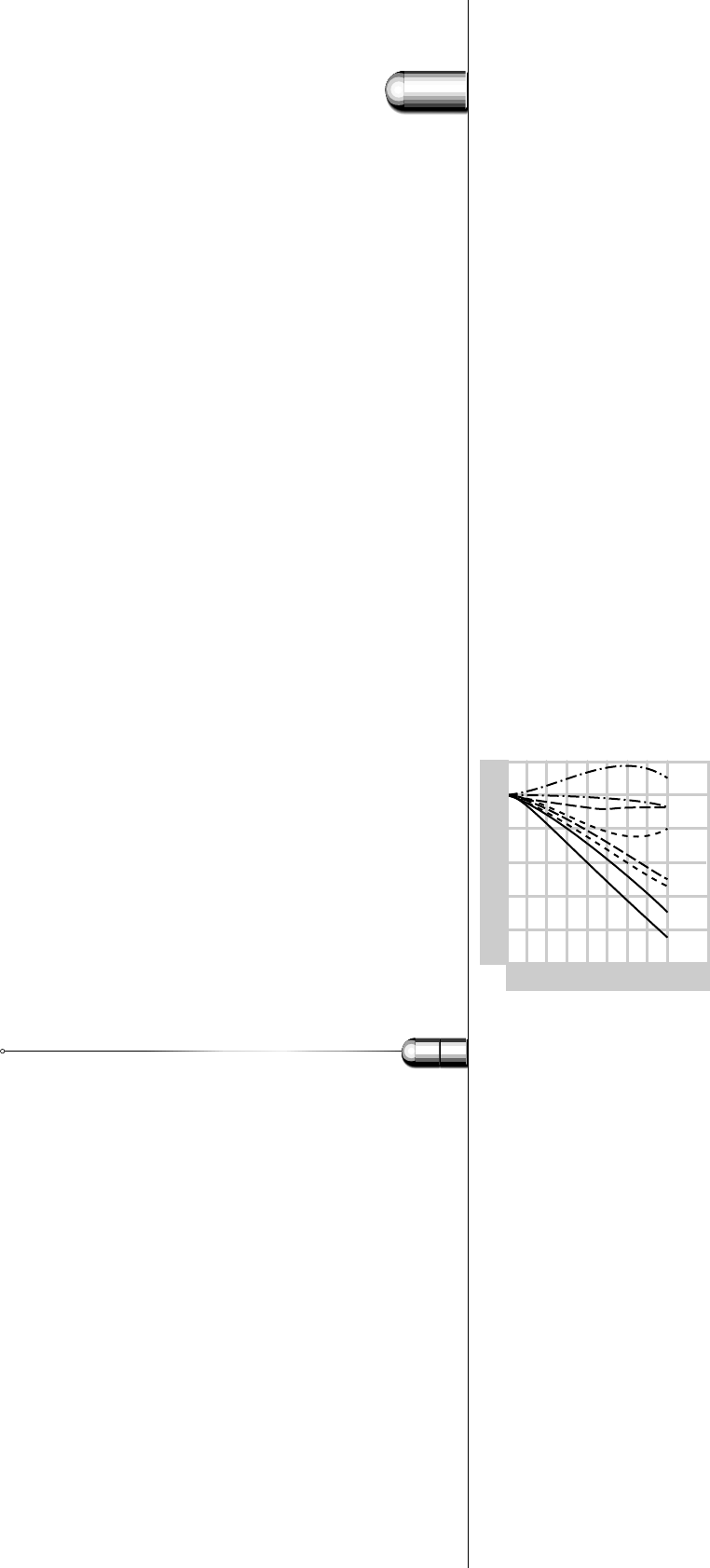
In outdoor applications a natural air circulation around the luminaire
is assumed, which gives a cooling effect of about 10 ºC.The same
luminaire with an indoor ambient temperature limit of 25 ºC, will in
practice have an outdoor ambient temperature limit of 35 ºC. If for
outdoor luminaires an ambient temperature t
a
is given,it refers to the
outdoor situation.
Special lamps, luminaires and electrical circuits have been developed
for use in hot, cold, humid or potentially explosive environments.
Amalgam lamps - and to a lesser extent also krypton-filled (‘TL’D)
lamps - are not susceptible to the drop in light output at high ambient
temperatures experienced by normal fluorescents.When normal
lamps are operated on inductive ballasts, these may well overheat due
to the increase in the lamp current brought by the higher operating
temperature (see Fig. 129).
However, where the decrease in light output and luminous efficacy can
be tolerated, and provided proper measures are taken to prevent
overheating of the circuitry,tube wall temperatures of up to about 90 ºC
are acceptable.
The use of properly ventilated luminaires will, in most environments,
obviate any heat problems.An air stream through the luminaire is an
effective way of removing the heat generated by the lamp and ballast.
Effects of mains voltage fluctuations
The lamp voltage of a fluorescent lamp mainly depends on the lamp
construction (length and diameter) and the gas filling. It hardly
changes as a consequence of voltage variations in the mains, which
means that fluctuations of the mains supply must be compensated for
by the ballast.An increasing mains voltage results in a higher ballast
current, as the impedance of the ballast is nearly constant (see section
5.1.2: Stabilisation).As the ballast current equals the lamp current, the
power in the lamp and so the light output of the lamp increases at
rising mains voltage.
Supplies with wide mains voltage deviations will lead to considerable
deviations in luminous flux. Deviations of less than 5 per cent in
conjunction with the normal ballast will keep the values within acceptable
limits.The lumen level will not show fluctuations of more than 10 per
cent.When the mains voltage constantly differs more than 5 per cent
from the ballast rated voltage,the appropriate ballast should be applied.
313
5
136
Fig. 129. Influence of temperature
increase on lamp current (I), lamp
voltage (V), lamp power (P) and luminous
flux (
Φ
) for a 40 W fluorescent lamp on
inductive and capacitive ballasts.
3.12 Ambient and operating temperatures
%
t (˚C)
I
ind
I
cap
P
ind
V
ind
P
cap
V
cap
Φ
ind
Φ
cap
120
60
40
20
100
80
20
40
60
80
100
0


















